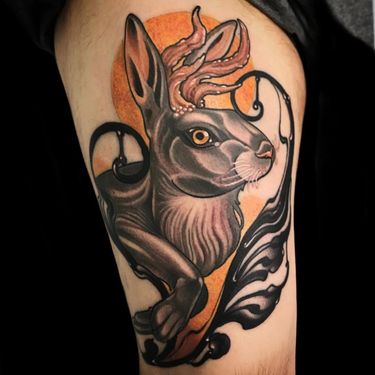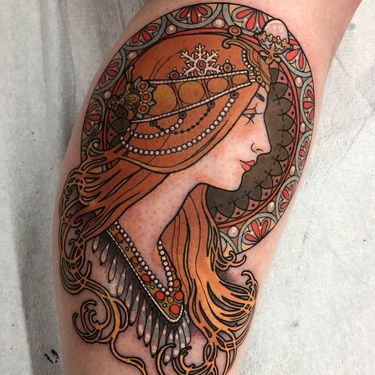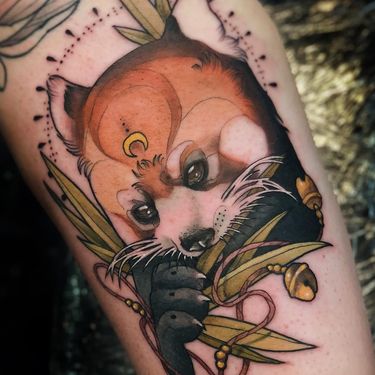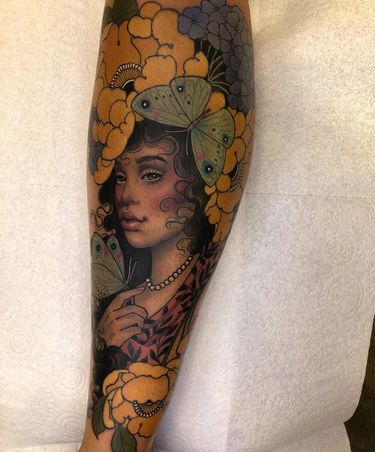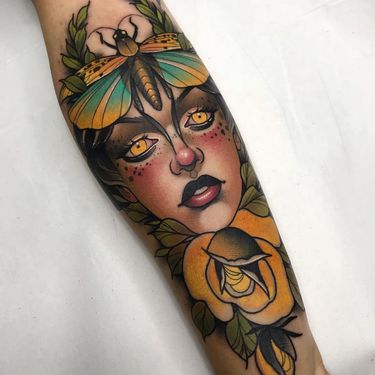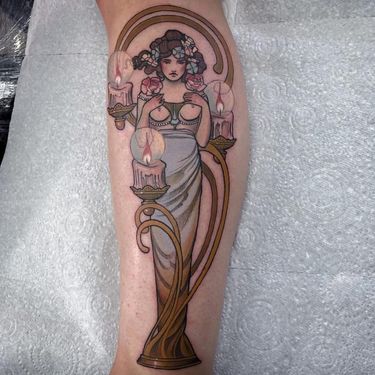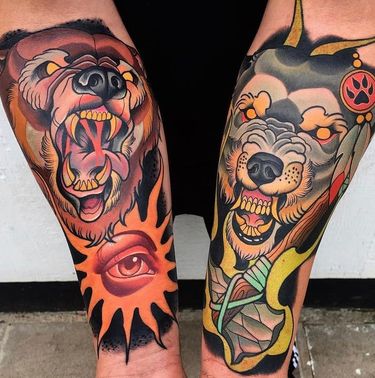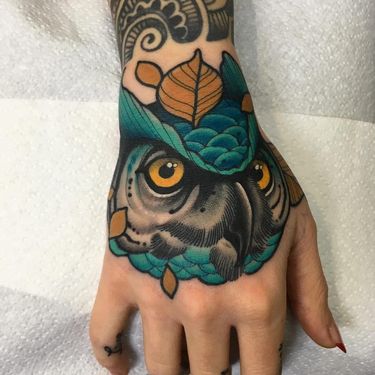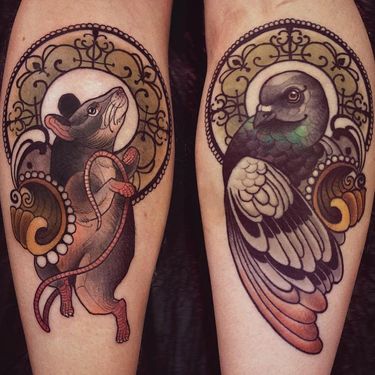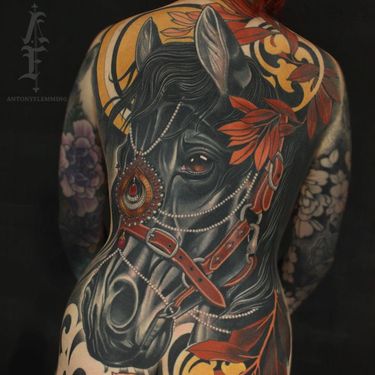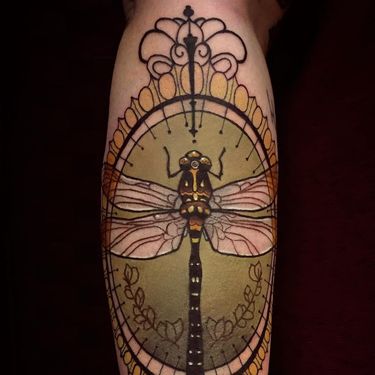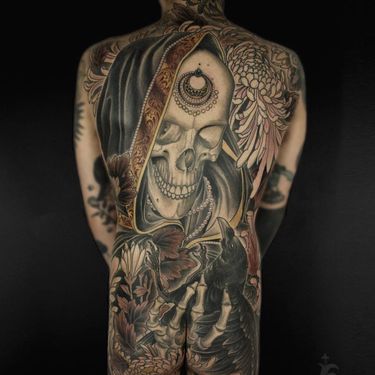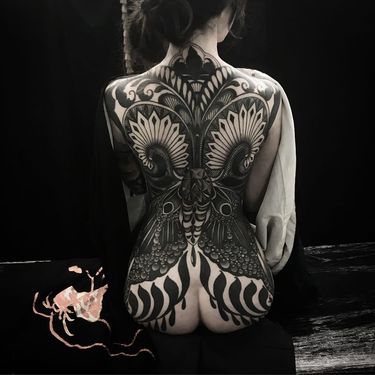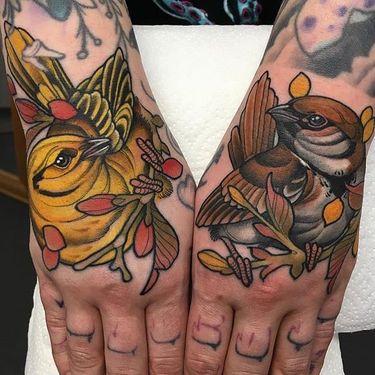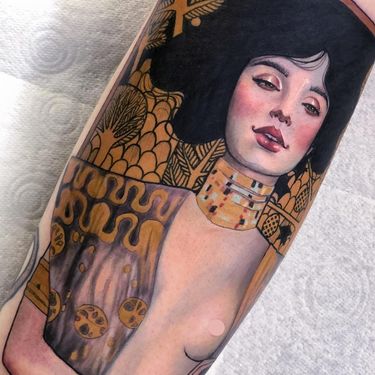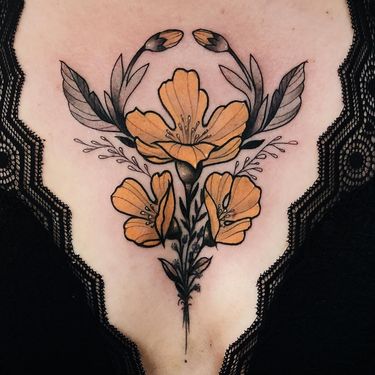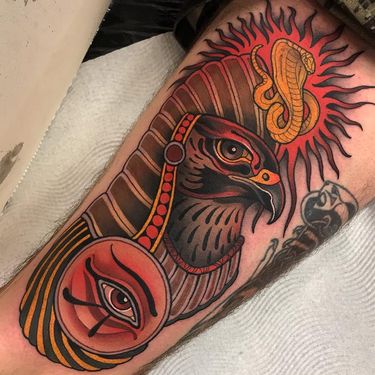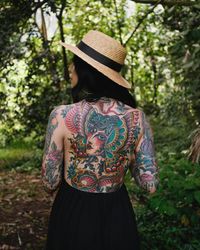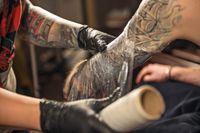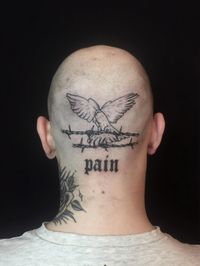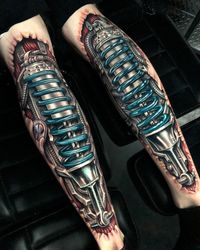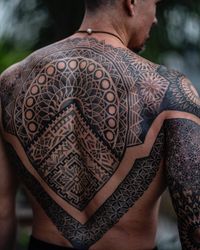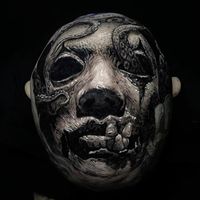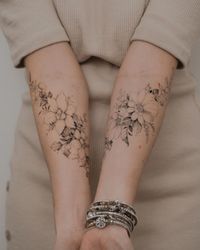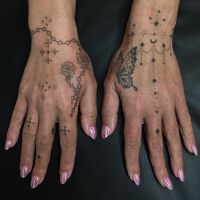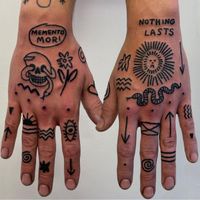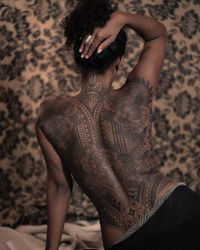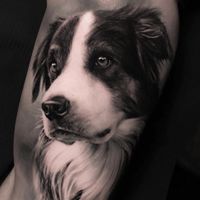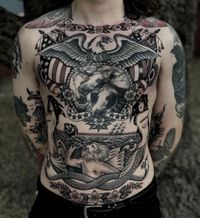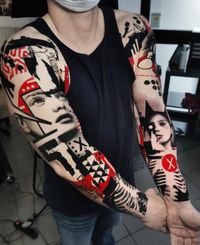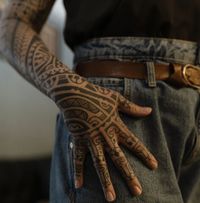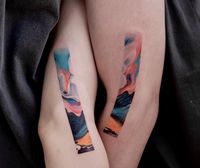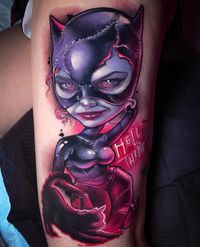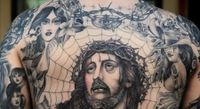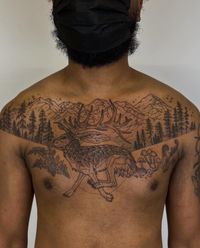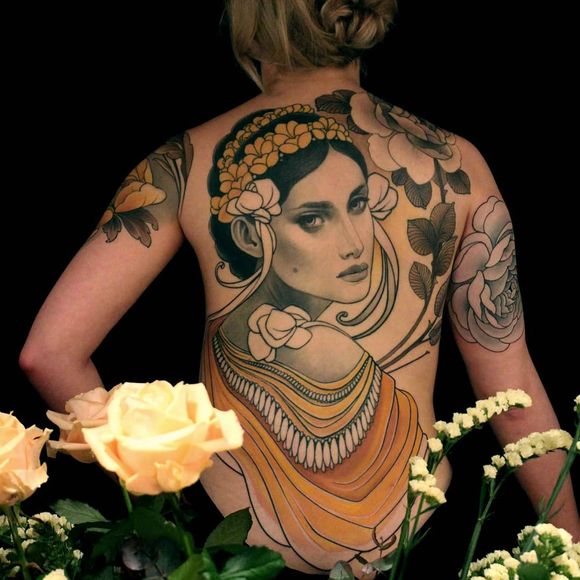
Style Guide: Neo-Traditional
Explore the history, influences, and artists within the Neo-Traditional tattooing style.
- Although very different visually from American Traditional, Neo Traditional still uses the same basic and fundamental techniques, such as outlining in black ink.
- Motifs from Ukiyo-e Japanese prints, Art Nouveau, and Art Deco are all art movements that inform and influence Neo-Traditional tattoos.
- Neo-Traditional tattoos are known for their dense and richly sumptuous aesthetic that often depict flowers, portraits of women, animals, and more.
- Antony Flemming, Miss Juliet, Jacob Wiman, Jen Tonic, Hannah Flowers, Vale Lovette, Heath Clifford, Deborah Cherrys, Sadee Glover and Chris Green are considered top of their field in the stylings of Neo-Traditional tattooing.
Brilliant and dramatic colors, often in tones that recall Victorian velvets, lush gems, or hues of autumn’s fallen leaves, merged with lavish details like pearls and fine lace – this is often what comes to mind when one thinks of the Neo-Traditional style. Perhaps the most extravagant aesthetic in tattooing, this particular style blends the techniques of American Traditional with a more modern and dimensional approach. In this guide, we examine the history, influences, and artists who call the Neo-Traditional method their own.
History and Influences of Neo-Traditional Tattooing
Though it may sometimes seem a far cry from American Traditional style, Neo-Traditional actually does keep in line with many of the technical rules of traditional tattooing. Though line width and weight may vary, black outlines are still standard practice. Clarity of composition, the importance of a black carbon barrier to hold color, as well as shared themes are some of the commonalities. Where Neo-Traditional tattoos tend to differ from Traditional is in their more intricate detailing, depth of image, and their unconventionally varying, vibrant color-palette.
Perhaps the first historical artistic movement that is immediately apparent in the Neo-Traditional style is Art Nouveau. But to understand Art Nouveau, one must first understand the context and symbolism behind that which sparked the movement to flourish.
In 1603 Japan had closed its doors to the rest of the globe. The floating world was intent on protecting and preserving their culture which, due to pressure from outside forces, was being greatly threatened. However, over 250 years later, in 1862, forty Japanese officials were sent to Europe to discuss the opening of Japan’s closely guarded gates. In order to ease tensions between countries, and sustain healthy trading relationships, goods from the two countries began to cross oceans and lands to eagerly awaiting fingertips.
The interest in Japanese goods was almost fetishistic in Europe, and the craftsmanship of the country came to greatly influence future artistic aesthetics. In the late 1870’s and 80’s one can see Japanese artwork greatly informing the works of Monet, Degas, and Van Gogh. Using flattened perspectives, patterns, and even props such as painted fans and beautifully embroidered kimono, masters of Impressionism eagerly adapted Eastern artistic philosophies into their own work. Van Gogh is even quoted as saying, “We wouldn’t be able to study Japanese art, it seems to me, without becoming happier and more cheerful, and it makes us return to nature…” This influx of Japonisme, and a return to nature, was to spark the next movement to have the greatest effect on contemporary Neo-Traditional tattooing.
Art Nouveau, most popular and in use during the years of 1890 to 1910, continues to inspire artists today, including Neo-Traditional tattooists. The style was highly influenced by the Eastern artworks being exhibited in Europe at the time. The obsession with Japanese aesthetics was in full swing, and one can see similar line work and color stories that are much like Ukiyo-e woodblock prints within Art Nouveau. Not just confined to aspects of 2D visual art, the movement informed architecture, interior design, and more. Beauty and refinement, graceful filigree-esque details, all wonderfully merged with portraits usually set against a background of lush florals and nature scenes. Perhaps the best examples of this amalgamation of art forms is in Whistlers ‘The Peacock Room’, finished in 1877, which is gilded and decorated with a wonderful sense of Asian elements. However, Aubrey Beardsley and Alphonse Mucha are the most famed of the Art Nouveau artists. In fact, many Neo-Traditional tattoos replicate Mucha’s posters and advertisements either directly or in subtle detailing.
Art Deco was the next movement that replaced Art Nouveau. With slicker, more modernized, and less romanticized lines, Art Deco was the aesthetic of a new age. Still often exotic in nature, it was more refined than Art Nouveau, which was still bathed in the excesses of Victorian culture. Egyptian and African influences can be seen, in part due to the Jazz Age eruption that was greatly supported by the energy of younger generations still recovering from the depressions of World War I. Although Art Deco has not informed Neo-Traditional tattoos as much as Art Nouveau, much of the passion, flair, and fire of Neo-Trad is gleaned from this particular cultural movement.
Both of these styles lay a striking and eye-catching foundation for Neo-Traditionalism.
Neo-Traditional Tattoo Artists
Though many modern tattooists have tried to master Neo–Traditional tattooing, none have been so successful as Antony Flemming, Miss Juliet, Jacob Wiman, Jen Tonic, Hannah Flowers, Vale Lovette, and Heath Clifford. There are also the stylings of Deborah Cherrys, Grant Lubbock, Arielle Gagnon, Sadee Glover, Chris Green and Mitchell Allenden. Though each of these tattoo artists work within the field of Neo-Traditional tattooing, they all bring to it a unique and distinct flavor to the style. Heath Clifford and Grant Lubbock both concentrate on bold animal concepts, while Antony Flemming and Arielle Gagnon, though also both enthusiastic about animals, often infuse their pieces with ornamental details such as pearls, gems, crystals, lace, and metalwork. Hannah Flowers is known for her gorgeous portraiture of nymphettes and goddesses. One might notice references from Klimt and Mucha; their work is regularly referenced within her Neo-Traditional tattoos. Vale Lovette, while also an illustrator of animals and women, is perhaps most highly regarded for her large blackwork pieces which are saturated with Art Nouveau stylings frequently in the forms of filigree and architectural ornamentation.
Whether bedecked in the beautiful glow of white highlighted pearls, or awash in the warm and magnificent colors of cool weather, or set in a garden blessed by golden filigree and luxuriant flowers, Neo-Traditional tattoos are known for their dense and richly sumptuous aesthetic. It is not a trend, it is a welcome mainstay within the tattoo communities vast and diverse portfolio of stylistic offerings.
